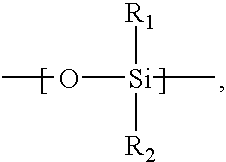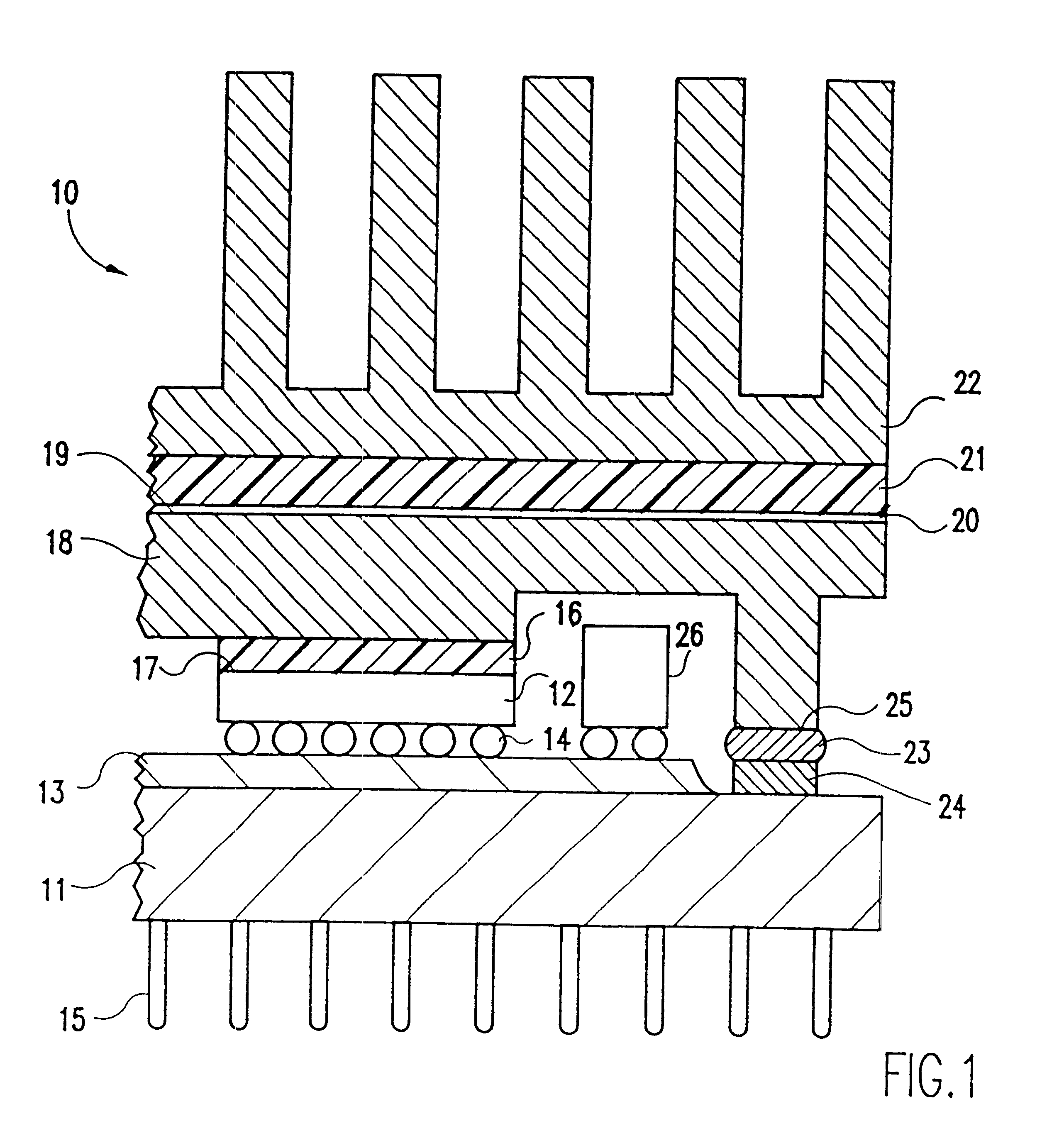Method using a thin adhesion promoting layer for bonding silicone elastomeric material to nickel and use thereof in making a heat sink assembly
a technology of silicone elastomeric material and adhesion promoting layer, which is applied in the direction of laminated elements, light and heating apparatus, transportation and packaging, etc., can solve the problems of limiting yield and reliability, increasing the amount of heat that the components must dissipate generally, and requiring a relatively complex and intensive manufacturing schem
- Summary
- Abstract
- Description
- Claims
- Application Information
AI Technical Summary
Benefits of technology
Problems solved by technology
Method used
Image
Examples
Embodiment Construction
The invention provides an adhesion promoting layer affording good bonding between polymeric adhesives and metals otherwise having poor direct adhesion to such polymeric adhesives. One advantageous application of the invention involves a heat sink assembly and means for attaching a silicon-containing polymeric adhesive for a heat sink to an otherwise poorly adherable cap surface thereto, such as a nickel-plated MCM cap, which yields cap-to-heat sink bond strength meeting package performance and reliability requirements.
Referring now to the drawings, and more particularly to FIG. 1, there is shown a heat sink assembly 10 according to an embodiment of the invention, including nickel-plated cap 18 that is fixedly bonded to a layer of silicone elastomeric material 21 (used to attach a heat sink 22 ) by means of an interfacial, thin adherent metal film 20. The thin adherent metal film is a metal material, such a chromium, or another metal selected from Groups IVB, VB, VIB of the Periodic ...
PUM
| Property | Measurement | Unit |
|---|---|---|
| Linear density | aaaaa | aaaaa |
| Temperature | aaaaa | aaaaa |
| Thickness | aaaaa | aaaaa |
Abstract
Description
Claims
Application Information
 Login to View More
Login to View More - R&D
- Intellectual Property
- Life Sciences
- Materials
- Tech Scout
- Unparalleled Data Quality
- Higher Quality Content
- 60% Fewer Hallucinations
Browse by: Latest US Patents, China's latest patents, Technical Efficacy Thesaurus, Application Domain, Technology Topic, Popular Technical Reports.
© 2025 PatSnap. All rights reserved.Legal|Privacy policy|Modern Slavery Act Transparency Statement|Sitemap|About US| Contact US: help@patsnap.com


